

|
| Home Previous Next | |
|
|
|
[Click on any photo to enlarge it] Day Four - Xian, Shaanxi ProvinceJade and the Terracotta Warriors, Part IThe city of Xi'an (meaning “Western Peace”) is the capital of the Shaanxi Province. It is one of the oldest cities in China. There is human evidence found here that is well over a million years old. The Emperor Qin Shi Huang, who unified all of China and connected the individual walls into one Great Wall, centered his dynasty here. Over the centuries, Xi'an has been called by many names: Fenghao, Chang'an, Xijing, Daxing, Fengyuan, Anxi, Jingzhao, and finally Xi'an in 1360 during the Ming dynasty. This was the capital of China for 13 ruling dynasties. During the Tang Dynasty (618-907A.D.), Xi'an was one of the largest cities, and by the middle of the 8th century A.D., tax records show the population at just under 2 million people, making it the largest and most cosmopolitan city in the world at that time. Xi'an is also the eastern end of the Silk Road. During the Han Dynasty (207 B.C. - 220 A.D.) trade routes were expanded westward. For centuries these routes extended from China to the Mediterranean and were integral to the development of the civilizations. Silks, lacquer-ware and porcelain from China were traded for spices, nuts, glass and other valuable goods from Persia, India, Egypt, Arabia, Greece, Turkey, Rome and many other places. This brought material wealth to Xi'an. In addition to the trades, religious and cultural exchanges took place all along the Silk Road. Buddhism, Christianity, Islam, Taoism, and more can all be found in Xi'an. We didn't have to meet until 9:00 A.M. so we had a little time to relax and enjoy breakfast before getting back on the fast track. 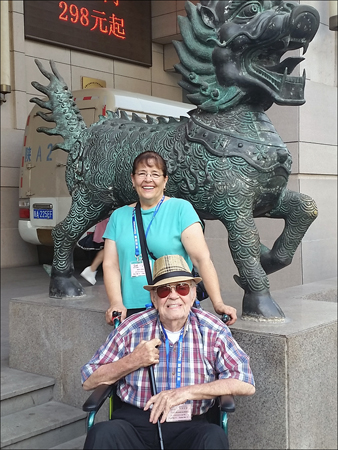
Irma and Reuben in front of our Hotel
We have a second guide here in Xi'an - Ye Nan. He specializes in this area so he would tell us all about Xi'an and the surrounding places. However, we still had Zhang Lu with us to help and take care of us. Our first stop was the Jade Factory. 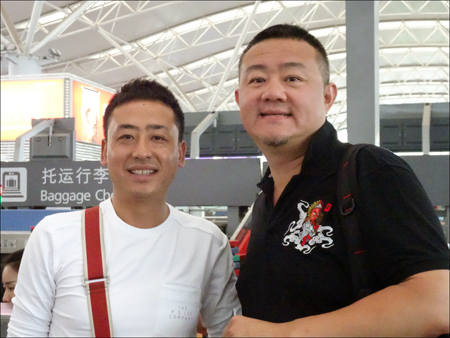
Ye Nan and Zhang Lu
The Jade FactoryIn the Jade Factory there was a guide to explain to us the various kinds of Jade. 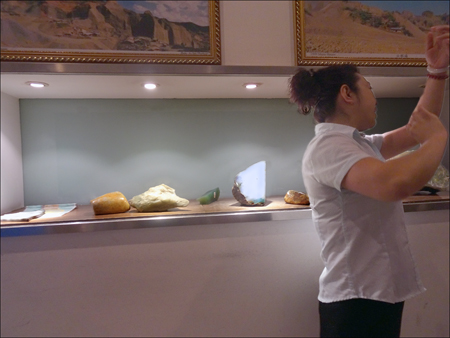
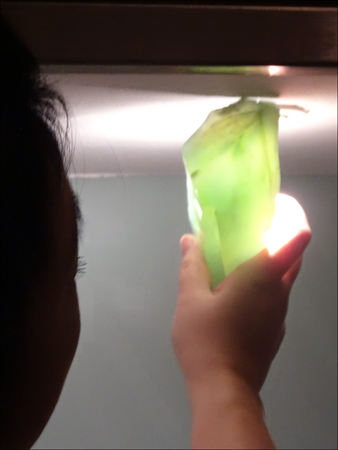
There are two basic kinds of Jade: Nephrite and Jadeite. Nephrite is the most common and has traditionally been the most highly prized in China. It is softer than Jadeite. The various colors of Nephrite come from the amount of iron in it. Whites, creams and grays contain low levels of iron. Greens and dark grays contain higher levels. The intensity of the colors is not high and it cannot be polished to a brilliant shine. Jadeite is much harder and denser than Nephrite. It can be very highly polished and shines brilliantly. It has recently become more prized than Nephrite. The colors are green, red, blue, pink, purple, violet and white. 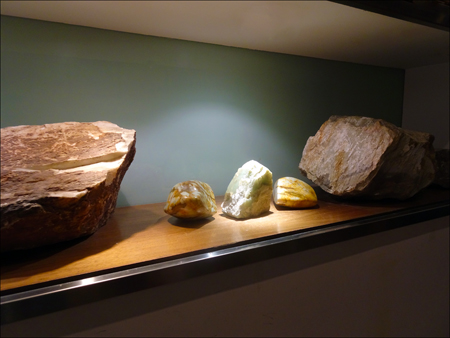
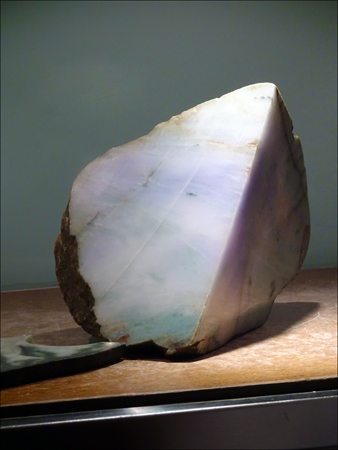
Almost all of the history of China contains Jade in some form. There are surviving pieces of jade from the Neolithic period to the present day. Through the centuries it has been prized by the Imperial courts. It was used in burial rituals well into the Han Dynasty as an aid to immortality. Jade is the only material that contains both the yin and yang qualities of Heaven and Earth. This earns it the title of "Stone of Heaven." In China it is believed that this gem of Heaven and Earth is endowed with magical qualities. Jade can change color over time and some believe that if the stone likes the wearer, it will grow a deeper, darker shade. It is also supposed to improve circulation and calm the mind. They showed us the workshop where artisans carve and create pieces in Jade, but no one was working that day. Then we went into the showroom. There were so many amazing choices. Here are just a few samples. 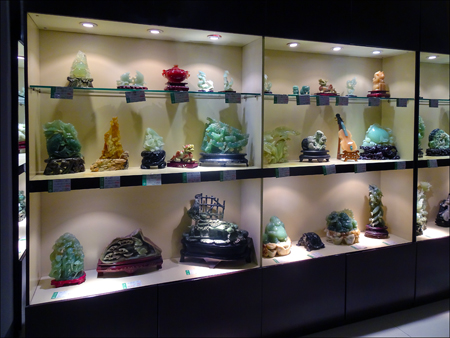
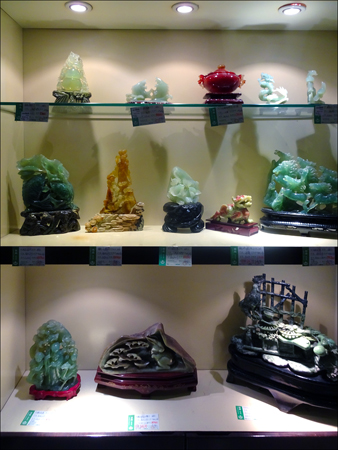
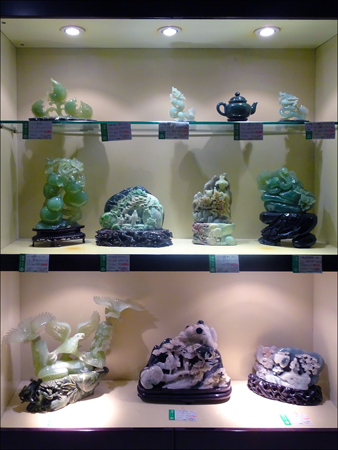
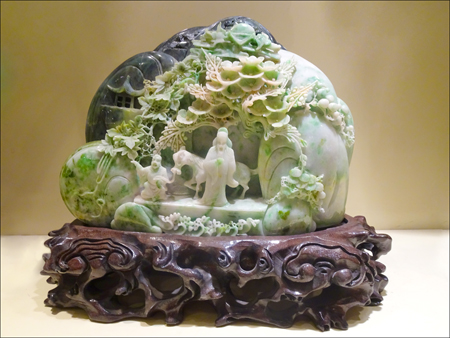
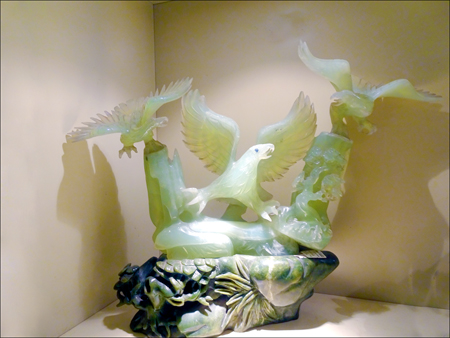
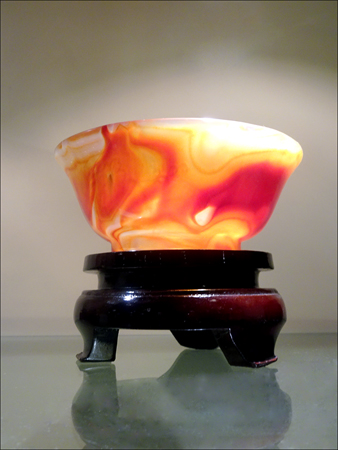
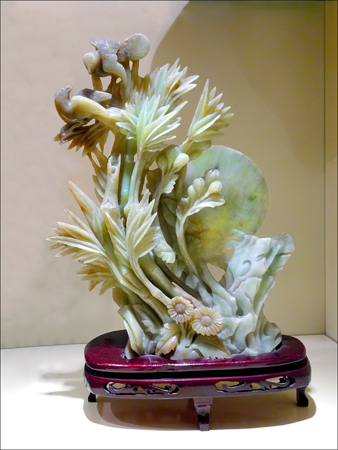
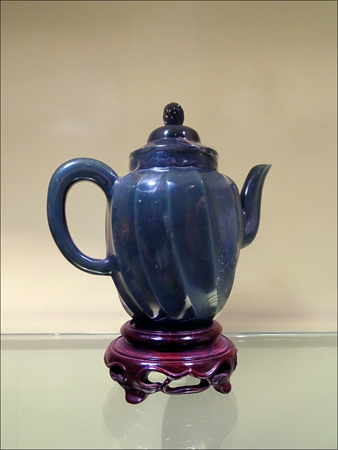
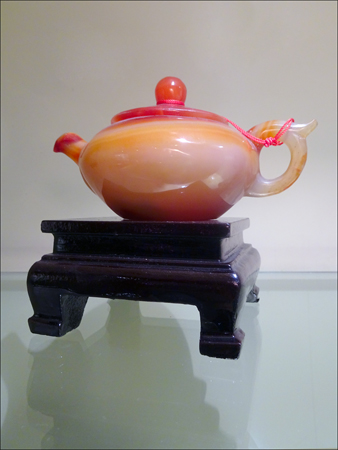
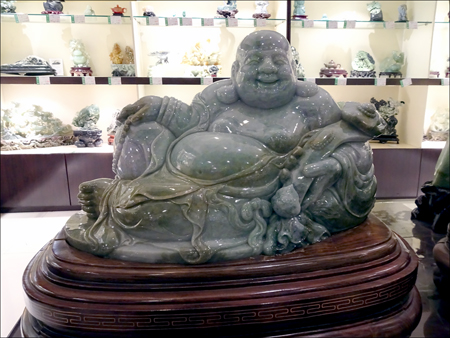
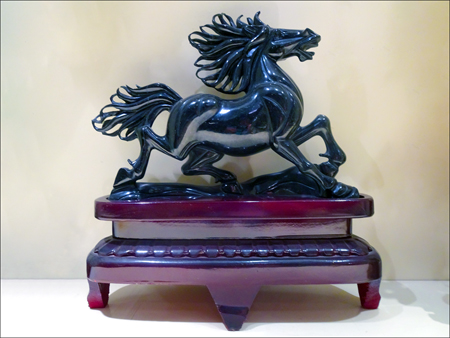
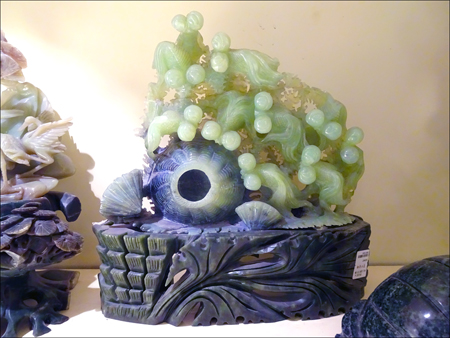
Xi'an is the city of the famous Terracotta Warriors who were built to guard the tomb of Qin Shi Huang. We were all very excited to see them. They are near a subdivision of Xi'an, called Lintong, that is east of the main city. We drove for about 40 minutes to get there. But first we must stop at the Official Terracotta Warriors Factory! The suspense is killing us. The factory is where they make the replicas of the soldiers, horses and many other things. They make anywhere from lifesize copies to small figurines of many of the soldiers. These figures are all cast in the big kilns. All of them are available for purchase inside the shop. If you want a lifesize one they will ship it to your home! 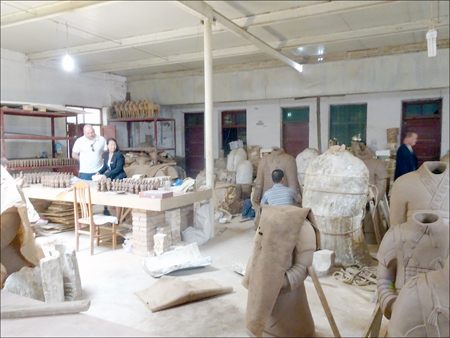
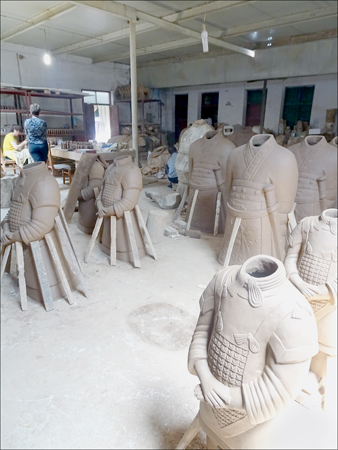
When you first walk through the gates you are greeted by three warriors - one without a head. You can stand behind him to have your picture made. 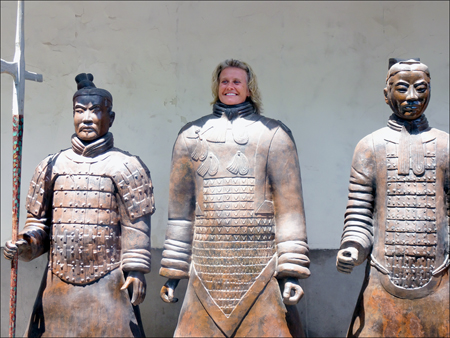
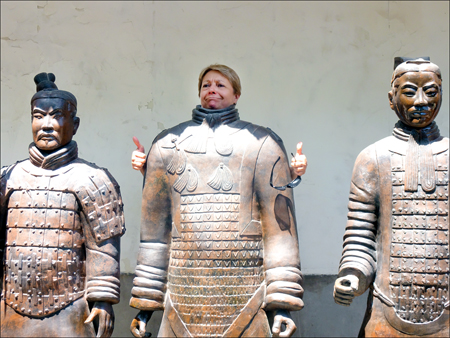
As with everywhere, there is a local guide to teach us about the soldiers and the other arts and crafts that can be found in this location. 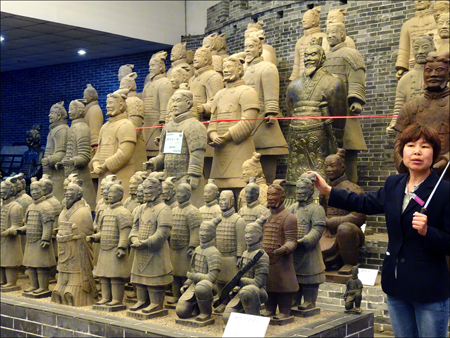
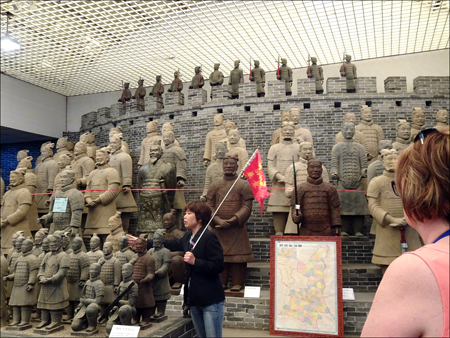
There were a great many varieties of artisans working at this location. In addition to all of the warriors, there were bronze figurines, inlaid works, Asian carpets, and so much more. There were so many things you wanted to bring home. They were all reasonably priced, but no more room in my house for as many things as I would have wanted. Beautiful works. 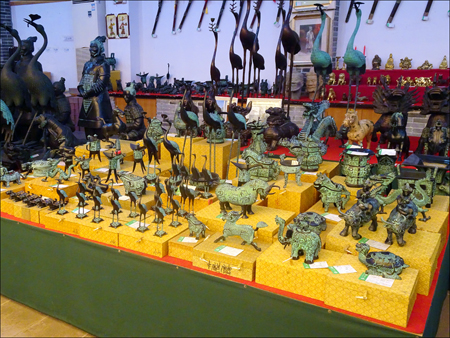
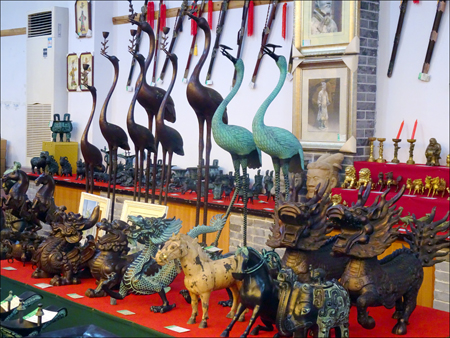
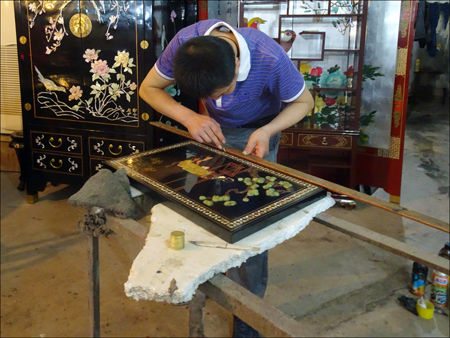
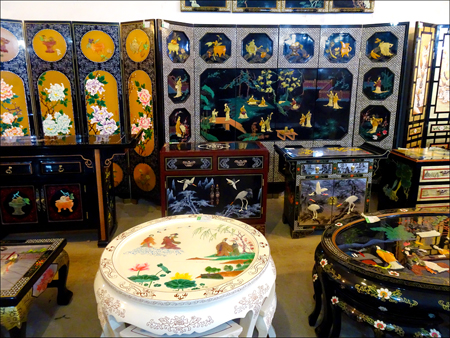
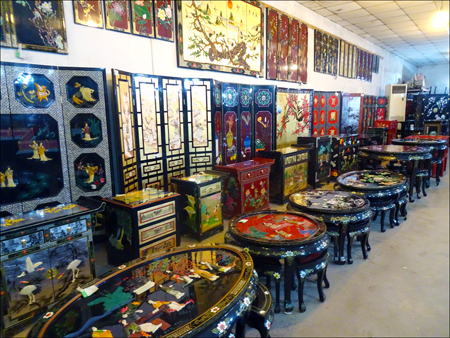
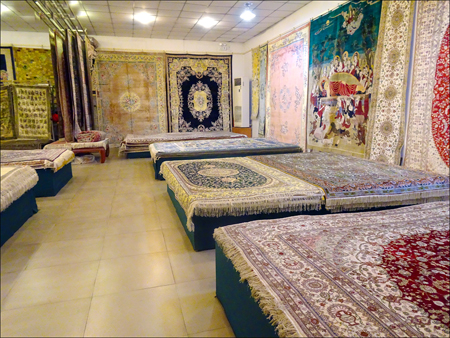
After making our way through the whole facility, which was large, we waited outside on the patio for our group to come together again. There was a beautiful wooden carriage out there that was hand-made over 200 years ago. It is 4.5m long, 2m wide and 2.3m high, and made of elm and pine. Lovely. 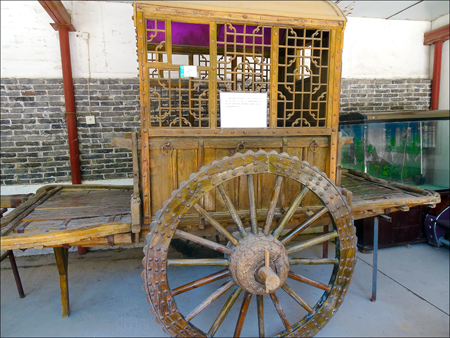
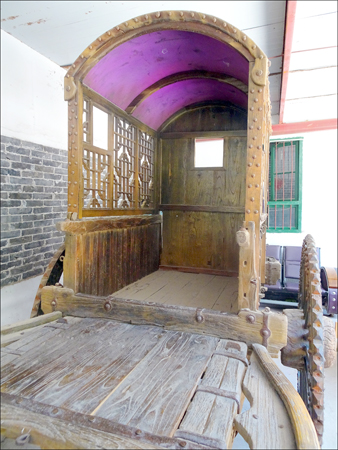
Now it was time for lunch. This time we went to a restaurant that was adjacent to a museum about the Silk Road. We weren't to have time for the museum, only lunch. However, there was a nice bronze display of camels in front of the museum. 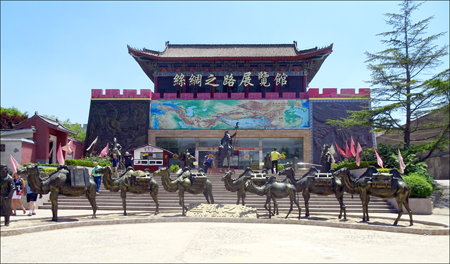
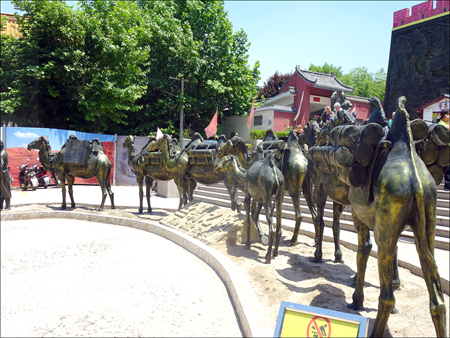
This was the first time they served us fish and it was delicious. 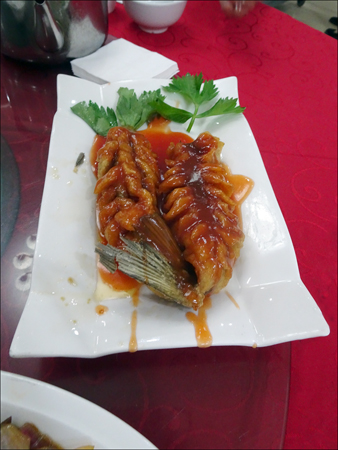
Finally we're off to see the Terracotta Warriors, but that story is too long to add here. Proceed to the next page! |
|
| Home Previous Next | |
|
|

|
|
|
Irma Hale E-mail: Copyright © Irma Hale. All
Rights Reserved. Free counters provided by Vendio |